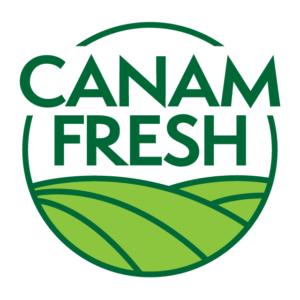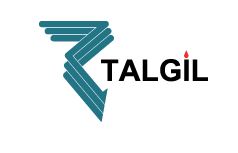In the world of agriculture, pest management plays a crucial role in ensuring healthy crop production. However, traditional methods often fall short of addressing both environmental and economic concerns. For farmers and agriculture enthusiasts, understanding and implementing sustainable pest management solutions is essential for long-term success and sustainability. This blog post will introduce you to the importance of sustainable pest management, explore various practices, and provide practical steps for integrating these solutions into your farming operations.
 The Urgency of Sustainable Pest Management
The Urgency of Sustainable Pest Management
The shift towards sustainable pest management isn’t just a trend—it’s a necessity. With growing concerns over the environmental impact of conventional pesticides and the increasing resistance of pests to chemical treatments, farmers face significant challenges in protecting their crops. Sustainable pest management offers a holistic approach that balances ecological health with crop productivity.
Farming communities worldwide grapple with pests that threaten crop yields and economic stability. Pests not only reduce the quantity and quality of produce but also lead to increased production costs and environmental harm. Addressing these challenges with sustainable solutions is crucial for the future of agriculture.
Understanding Pests and Their Impact
What Are Pests?
Pests are any organisms that cause damage to crops, reducing their growth, yield, and quality. Common agricultural pests include insects, weeds, fungi, and rodents. Each type poses unique challenges and requires specific management strategies.
Economic and Environmental Consequences
The economic impact of pests on agriculture is profound. They can cause significant crop losses, leading to reduced income for farmers. Additionally, the cost of pest control measures adds to the financial burden. Environmentally, the overuse of chemical pesticides leads to soil degradation, water pollution, and harm to non-target species, including beneficial insects and wildlife.
Traditional Pest Management Practices
Conventional Methods and Their Limitations
Traditional pest control methods primarily rely on chemical pesticides. While effective in the short term, these methods have limitations. Over time, pests can develop resistance to these chemicals, making them less effective. Additionally, the repeated use of pesticides can lead to residue buildup in the soil and water, posing health risks to humans and animals.
Drawbacks of Chemical Pesticides
Chemical pesticides, though widely used, have several drawbacks. They can harm beneficial insects, such as pollinators and natural pest predators. Furthermore, pesticide runoff can contaminate water bodies, affecting aquatic life and ecosystems. The health risks associated with pesticide exposure for farmworkers and consumers cannot be ignored.
Sustainable Pest Management Solutions
Integrated Pest Management (IPM)
Integrated Pest Management (IPM) is a sustainable approach that combines multiple strategies to manage pests effectively. IPM focuses on preventing pest problems through cultural, biological, physical, and chemical controls, used in an environmentally sensitive manner. The principles of IPM include monitoring pest populations, setting action thresholds, and employing a combination of management tactics.
 Biological, Cultural, and Physical Controls
Biological, Cultural, and Physical Controls
Biological Control: Biological control involves using natural enemies of pests, such as predators, parasites, and pathogens, to keep pest populations in check. For example, introducing ladybugs to control aphid populations or employing nematodes to target soil-borne pests are effective biological control methods.
Cultural Control: Cultural control practices enhance crop health and reduce pest pressure. Crop rotation, intercropping, and selecting pest-resistant crop varieties are key cultural practices. These methods disrupt pest life cycles and create unfavourable conditions for their proliferation.
Physical Control: Physical control involves mechanical methods to manage pests. This can include using barriers like nets or row covers to protect crops from insect pests, employing traps to monitor and capture pests, and practicing soil solarization to eliminate soil-borne pathogens and weed seeds.
Role of Technology in Sustainable Pest Management
Advancements in technology have revolutionized sustainable pest management. Precision agriculture tools, such as drones and remote sensing, enable farmers to monitor pest populations and crop health accurately. Additionally, data analytics and artificial intelligence can predict pest outbreaks and suggest targeted interventions, reducing the need for widespread pesticide applications.
Implementing Sustainable Pest Management on Your Farm
Practical Steps for Integration
- Assess Current Practices:
Evaluate your existing pest management strategies and identify areas for improvement. Consider conducting a pest risk assessment to understand the specific challenges your farm faces.
- Develop an IPM Plan:
Create a tailored IPM plan that incorporates biological, cultural, and physical control methods. Set action thresholds to determine when intervention is necessary and establish a monitoring system to track pest populations.
- Train and Educate:
Ensure that all farmworkers are trained in IPM principles and practices. Regularly update their knowledge to keep up with the latest sustainable pest management techniques.
Cost, Labor, and Long-Term Benefits
While the initial cost and labour involved in implementing sustainable pest management may seem daunting, the long-term benefits far outweigh these challenges. Reduced reliance on chemical pesticides leads to lower input costs and healthier crops. Additionally, sustainable practices contribute to soil health, biodiversity, and overall farm resilience.
Monitoring and Adapting Plans
Sustainable pest management requires continuous monitoring and adaptation. Regularly assess the effectiveness of your IPM plan and make necessary adjustments based on pest population trends and environmental conditions. Flexibility and responsiveness are key to successful pest management.
Future of Pest Management in Agriculture
Emerging Trends and Innovations
The future of pest management in agriculture is promising, with several emerging trends and innovations. Advances in biotechnology, such as genetically modified crops with built-in pest resistance, offer new avenues for sustainable pest control. Additionally, the development of biopesticides derived from natural sources provides effective alternatives to synthetic chemicals.
Collaboration and Education
Promoting sustainable pest management practices requires collaboration and education. Farmers, researchers, and policymakers must work together to develop and disseminate knowledge on sustainable techniques. Farmer field schools, extension services, and online platforms can play a vital role in spreading awareness and facilitating knowledge exchange.
Sustainable pest management is no longer an option but a necessity for the future of agriculture. By adopting integrated pest management practices and leveraging technological advancements, farmers can protect their crops, reduce environmental impact, and ensure long-term agricultural sustainability. It’s time for farmers to embrace and share these practices, contributing to global food security and a healthier planet.
For those looking to take the next step, consider consulting with agricultural experts or joining a community of like-minded farmers. By working together, we can cultivate a sustainable future for generations to come.

























